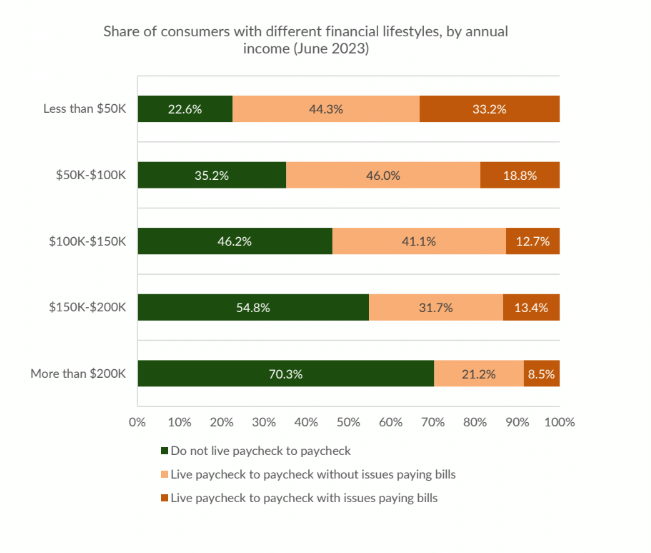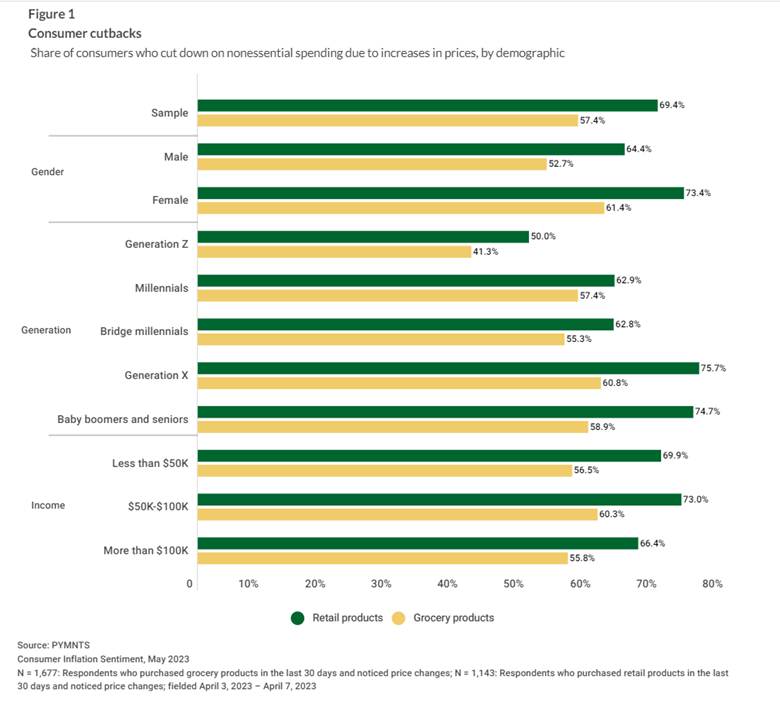Middle-Class Crunch Leads to Consumer Cutbacks and Merchant Trade Downs

Consumers making between $50,000 and $100,000 may be caught in a middle-income “crunch” these days as inflation’s growth slows while still trending upwards, and real wages stagnate.
While these issues plague all consumers, this demographic has the most consumers just making enough to get by while paying their bills, perhaps as a consequence of being stuck between consumers making less than $50,000 annually who could be eligible for assistance and those making more than $100,000 who may more readily have a savings cushion.
This caught-in-the-middle status may be a main driver in this income demographic’s financial lifestyle, noted in the below proprietary chart created for July’s “New Reality Check: The Paycheck-to-Paycheck Report,” a PYMNTS collaboration with LendingClub. Nearly half — 46% of those making between $50,000 and $100,000 — live paycheck-to-paycheck while still able to make their bills.

Another reason why nearly half of these consumers may be living paycheck-to-paycheck could be the impact the housing prices has on their financial well-being.
This essential cost has been rising along with other inflationary-driven rising prices, and its negative effects are noted in prior PYMNTS’ research, which found that monthly rent has had a very or extremely negative impact on the finances of 27% of middle-income consumers, with 14% of this demographic saying the same for monthly mortgage payments.
Middle-income consumers’ tendency to just get by amid rising prices has may spell trouble for some retailers, as the demographic is exhibiting a leading rate of spending pullback, noted in the below chart created for PYMNTS’ May “Consumer Inflation Sentiment Report.”
Data shows that 73% of these consumers pulled back on retail products, and 60% pulled back on groceries.

Middle-income consumers are partially handling this by switching merchants, and PYMNTS research finds that 16% of this demographic say this change is the most important change they have made as a result of increased prices.
Without the help of assistance or comfort of a cushion, those just treading financially are in their own unique squeeze during the generally rocky consumer landscape, reflected in their pulled-back spending habits. And, until there’s a more significant shift to a smoother path, this group may find itself stuck in this position for some time.

